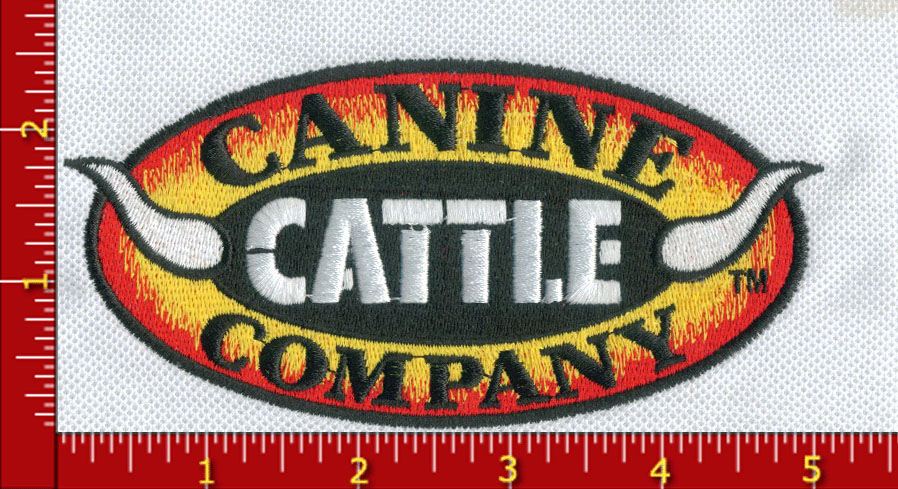Seamless Stitching: Digitizing for Knits to Prevent Puckering and Distortion
Embroidering on knit fabrics presents a unique set of challenges that demand careful consideration during the digitizing process. The inherent stretchiness and delicate nature of knits make them prone to puckering, distortion, and other issues if not handled with precision. In this guide, we'll delve into the intricacies of digitizing for knits, offering valuable insights and expert tips to ensure your embroidery on knit fabrics is seamless, precise, and free from unwanted distortions.
1. Understanding the
Characteristics of Knit Fabrics
Before diving into the digitizing process,
it's crucial to have a solid understanding of the characteristics of knit
fabrics. Knits differ from woven fabrics in that they are created by
interlocking loops of yarn, providing stretch and flexibility.
Stretch
and Recovery:
●
Inherent Stretchiness: Knits have a natural
stretch due to their structure.
●
Recovery: They return to their original shape
after being stretched.
Fabric
Grain:
●
Two-Way vs. Four-Way Stretch: Knits may
stretch in two directions (across the width) or four directions (both width and
length).
●
Grainline Consideration: Understand the
grainline of the knit for optimal embroidery placement.
Fabric
Thickness:
●
Varied Thickness: Knit fabrics come in various
thicknesses, from lightweight jerseys to heavier interlock.
● Adjust for Thickness: Digitizing should account for the thickness of the chosen knit fabric.
2. Selecting Appropriate
Stabilizers
Stabilizers play a crucial role in preventing
distortion and puckering when embroidering on knits. Choosing the right
stabilizer ensures that the fabric remains stable during stitching and supports
the embroidery design.
Cut-Away
Stabilizers:
●
Sturdy Support: Ideal for stable knits or when
a more robust stabilizing effect is needed.
●
Remains Attached: Cut-away stabilizers remain
attached to the fabric after embroidery.
Tear-Away
Stabilizers:
●
Temporary Support: Suitable for less stretchy
knits where temporary support is sufficient.
●
Easy Removal: Tears away cleanly after the
embroidery is complete.
Water-Soluble
Stabilizers:
●
For Delicate Knits: Best for delicate knits to
prevent stabilizer residue.
●
Dissolves Completely: Leaves no trace after
the embroidery is washed.
Mesh
or No-Show Stabilizers:
●
Lightweight Support: Ideal for lightweight and
sheer knits.
● Invisible Support: Provides support without being visible from the front of the fabric.
3. Adapting Stitch Types for
Knits
The choice of stitch types plays a crucial
role in preventing puckering and distortion on knit fabrics. Selecting stitches
that accommodate the stretch and movement of knits is key to a successful
embroidery outcome.
Run
Stitches:
●
Linear Patterns: Use run stitches for linear
designs on stable areas of the knit.
●
Stitch Direction: Adjust the stitch direction
to align with the fabric's stretch.
Column
or Satin Stitches:
●
Smooth Surfaces: Satin stitches work well for
smooth, stable areas of knits.
●
Density Control: Adjust stitch density to
prevent stiffness.
Fill
Stitches:
●
Versatile for Textures: Fill stitches can be
used for textured areas on knits.
●
Directional Patterns: Adjust the direction of
fill stitches to align with fabric stretch.
Open
Fill Stitches:
●
Breathable Designs: Use open fill stitches for
areas where breathability is crucial.
● Prevents Overheating: Ideal for sportswear or activewear.
4. Digitizing for Fabric Grain
and Direction:
Understanding the fabric grain and direction
is vital for preventing distortion in knit fabrics. Digitizing your design to
align with the fabric's stretch ensures that the embroidery will move
seamlessly with the knit.
Grainline
Alignment:
●
Parallel to Stretch: Align your design's main
elements with the direction of stretch.
●
Avoid Cross-Grain Stitches: Minimize stitches
that go against the grain to prevent distortion.
Stitch
Direction:
●
Follow Fabric Stretch: Adjust the stitch
direction to follow the natural stretch of the knit.
●
Avoid Tension Points: Prevent tension points
that can lead to puckering.
Embroidery
Placement:
●
Consider Fabric Thickness: Place embroidery
designs away from seams and areas with increased fabric thickness.
● Test Placement: Conduct test stitch-outs to ensure proper placement on the chosen knit.
5. Testing and Adjusting
Conducting test stitch-outs on a scrap piece
of the actual knit fabric is a crucial step in the digitizing process. Testing
allows you to identify potential issues and make adjustments before
embroidering on the final garment.
Stitch
Density Test:
●
Evaluate Stitch Appearance: Assess how the
stitches appear on the knit fabric.
●
Adjust Density as Needed: Increase or decrease
stitch density based on test results.
Fabric
Stability Test:
●
Check for Puckering: Examine the fabric for
signs of puckering or distortion.
●
Stabilizer Adjustment: Modify stabilizer type
or density if needed.
Stretch
and Recovery Test:
●
Assess Fabric Stretch: Ensure the fabric
maintains its stretch and recovery after embroidery.
● Fine-Tune Stitch Settings: Adjust stitch settings to accommodate the fabric's characteristics.
6. Minimizing Stitch Density in
Stretchy Areas
High stitch density in stretchy areas can
contribute to puckering and distortion. Minimizing stitch density in these
regions ensures that the fabric retains its stretch and moves naturally.
Lighter
Stitching in Stretchy Areas:
●
Reduce Stitch Density: Decrease stitch density
in areas with higher fabric stretch.
●
Maintain Flexibility: Allows the fabric to
stretch without creating tension points.
Use
of Underlay Stitches:
●
Stabilize Stretchy Areas: Incorporate underlay
stitches to provide additional stability in stretchy sections.
● Prevent Puckering: Underlay stitches distribute the tension, preventing puckering.
7. Proper Hooping Techniques
Proper hooping is a critical factor in
preventing distortion on knit fabrics. Ensuring that the fabric is taut and
evenly stretched within the hoop contributes to successful embroidery.
Stabilizer
and Fabric Hooping:
●
Stabilizer Tautness: Hoop the stabilizer
tightly to provide a stable base for the fabric.
●
Avoid Overstretching: Hoop the knit fabric
evenly, avoiding excessive stretching.
Float
the Knit Fabric:
●
Minimize Tension Points: If possible, float
the knit fabric on top of the hooped stabilizer.
● Reduce Stress: Minimizes stress on the fabric during the embroidery process.
Conclusion:
Digitizing for knits requires a delicate balance between creativity and technical
precision. By understanding the characteristics of knit fabrics, selecting
appropriate stabilizers, adapting stitch types, and conducting thorough testing,
you can ensure that your embroidery on knits is free from puckering and
distortion. With each stitch, let the seamless integration of design and fabric
speak to the craftsmanship behind the art, creating garments that not only look
stunning but also feel comfortable and retain their natural stretch. Embrace
the unique challenges of embroidering on knits, and may your digitized designs
adorn fabrics with precision and grace.



